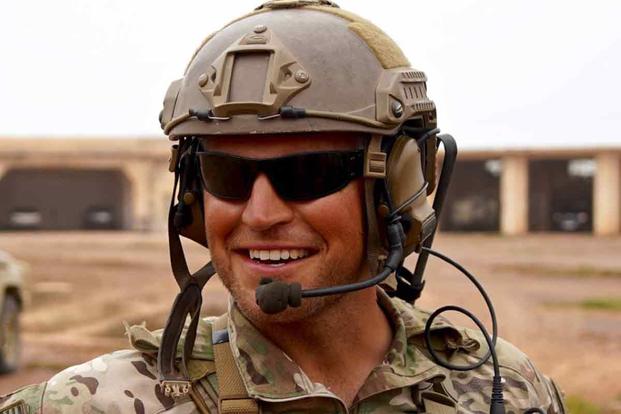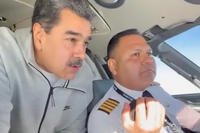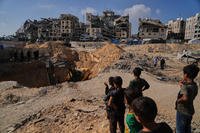Special Forces underwater training has resumed and relocated after a brief halt this week following a soldier's death during a swim at Fort Campbell in Kentucky.
The Army identified the soldier on Friday as Staff Sgt. Paul Lincoln Olmstead, 29, who died Tuesday during a water training exercise at the Joe Swing Park Reservoir by the base, according to a press release. It was the second Army fatality in recent months during water training, after Staff Sgt. Micah Walker died in Florida in July.
A Utah National Guard Green Beret, Olmstead had been training at the Maritime Assessment Course, or MAC, a grueling 10-day school where Special Forces soldiers demonstrate their water survival skills. The course consists of multiple swimming examinations and has troops spend extended time underwater holding their breath.
Olmstead went underwater during a swim and did not resurface. His body was recovered Wednesday and the incident is under investigation.
Olmstead served in Bravo Company, 1st Battalion, 19th Special Forces Group.
Read Next: How a Public Affairs Snafu Led to News Reports of a Fake Shooter at Fort Meade
Maj. Dan Lessard, a spokesperson for 1st Special Forces Command, said training was suspended on Wednesday but resumed the following day after safety protocols were reevaluated. Training for the course was moved from the reservoir to a swimming pool, which was considered a more controlled environment.
It's unclear if the location of Olmstead’s training, in a reservoir, contributed to his death or if switching to pools will be a permanent change for MAC students.
"Sometimes we expect this sort of thing in combat, but not during training, which makes this difficult for the unit and especially the family," Col. Paul Peters, commander of 19th Special Forces Group, said in a press release Friday.
MAC is a prerequisite for the seven-week Combat Diver Qualification Course, or CDQC, one of the Army's toughest schools that certifies troops to conduct combat operations underwater.
Olmstead's death follows an incident in July where Walker, 31, of 2nd Battalion, 10th Special Forces Group, died during CDQC at Naval Air Station Key West, Florida.
Janice Burton, a spokesperson for the John F. Kennedy Special Warfare Center and School, told Military.com in an email that training was also halted for a day after his death, but investigators found no cause for safety concerns.
"Immediately after SSG Walker's death, cadre halted training to review all safety protocols related to dive training and certification," Burton told Military.com.
She said that based on initial findings it appeared safety measures were more than adequate in Walker’s case.
Walker's autopsy was still not complete, according to Burton. It was unclear when a cause of death would be identified or why the investigation had taken more than two months to complete.
In Nov. 2016, Staff Sgt. David Whitcher, 30, also died during dive training. Like Walker, he was a CDQC student. He was assigned to C Company, 2nd Battalion, 7th Special Forces Group.
Underwater training comes with an added layer of danger similar to other military specialties such as airborne and explosive ordnance disposal, and thus troops receive small supplements to their pay. In the airborne, for example, 13 soldiers died during jumps between 2012 and 2015, according to the Aerospace Medical Association.
Lino Miani, the president of the Combat Diver Foundation and a retired officer who commanded a dive team in 1st Special Forces Group, said the water creates uncertainty and a level of danger despite strict fitness standards and safety protocols.
"It requires so much training to know how your body is going to respond and know how to use the equipment. Water is inherently unpredictable," Miani told Miltiary.com.
One former dive instructor told Military.com that classes are typically small, and that students undergo strict physical exams before being allowed in the course. All training has multiple medical professionals on site as well as observers who effectively act as lifeguards.
Additional medical personnel are also available to quickly respond to emergencies. It’s unclear, given the typical supervision for dives, why Olmstead’s body was not found until the next day after his death.
The former dive instructor, who spoke on the condition of anonymity, said one safety precaution is keeping classes small, so instructors can easily track every student. After each class graduates, safety precautions are reexamined.
“One [recent] class had almost as many instructors as students," the instructor said.
Olmstead joined the Utah Army National Guard, Feb. 8, 2016, and had served as a Special Forces engineer sergeant since Oct. 11, 2019. He was an honor graduate of the Special Forces Advanced Urban Combat Course and a graduate of the Special Forces Sniper Course. He is survived by his wife and two children.
-- Steve Beynon can be reached at Steve.Beynon@military.com. Follow him on Twitter @StevenBeynon.














